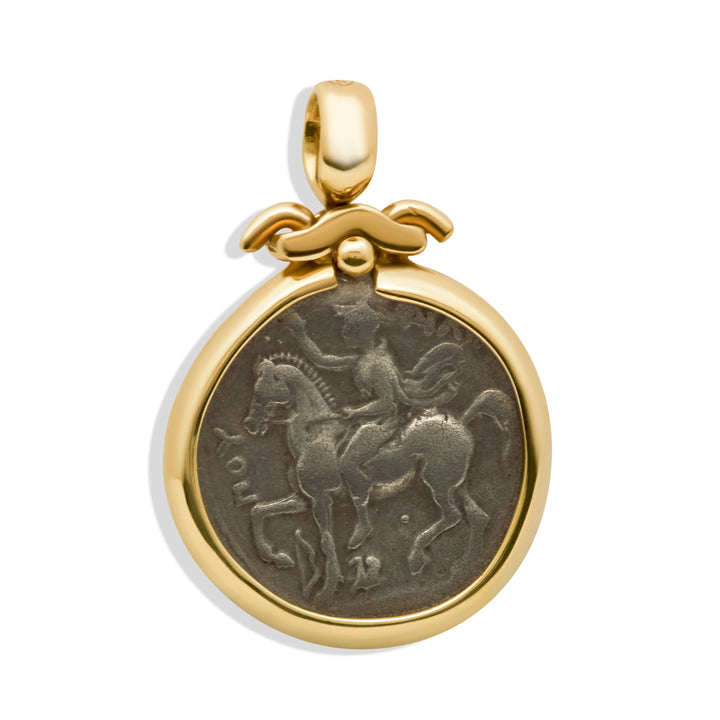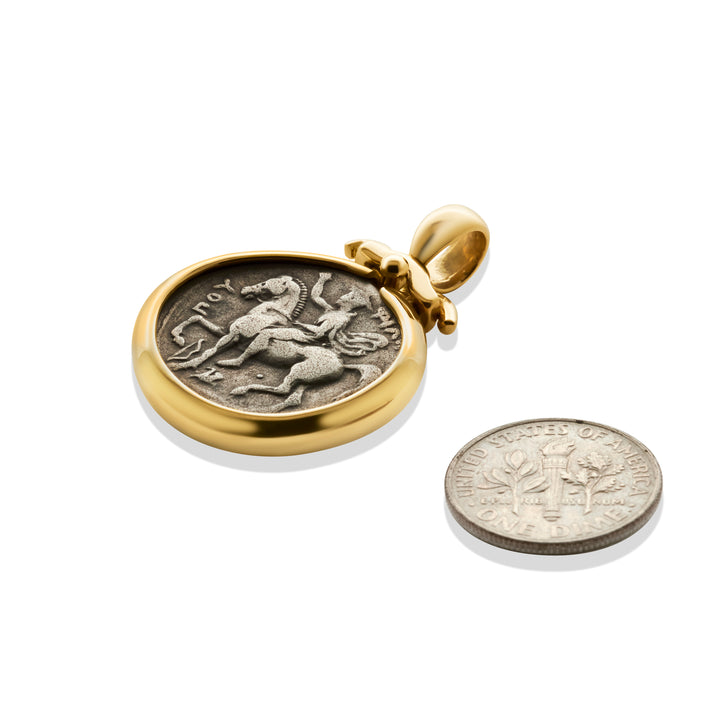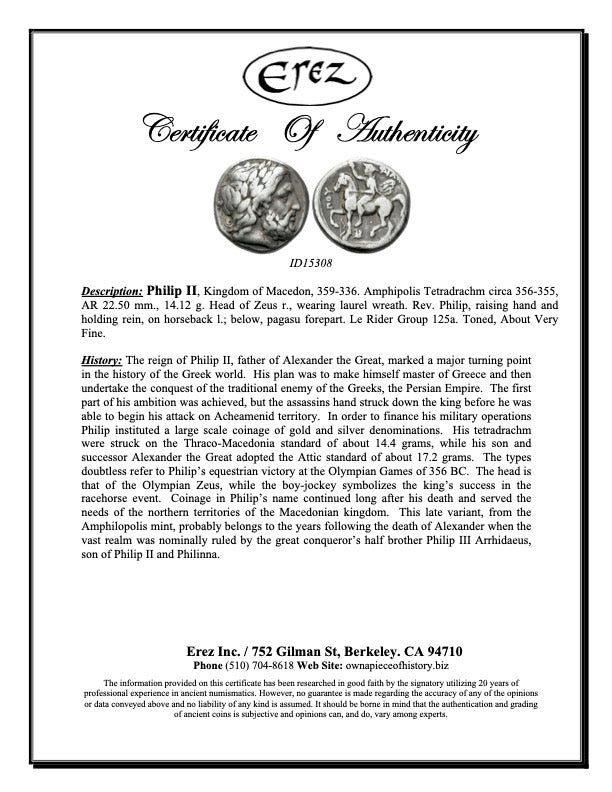Free Shipping On U.S. Orders Over $100
Contact:erezllc@gmail.com | (916) 769-9256
Description: Philip II, Kingdom of Macedon, 359-336. Amphipolis Tetradrachm circa 356-355, AR 22.50 mm., 14.12 g. Head of Zeus r., wearing laurel wreath. Rev. Philip, raising hand and holding rein, on horseback l.; below, pagasu forepart. Le Rider Group 125a. Toned, About Very Fine.
History:The reign of Philip II, father of Alexander the Great, marked a major turning point in the history of the Greek world. His plan was to make himself master of Greece and then undertake the conquest of the traditional enemy of the Greeks, the Persian Empire. The first part of his ambition was achieved, but the assassins hand struck down the king before he was able to begin his attack on Acheamenid territory. In order to finance his military operations Philip instituted a large scale coinage of gold and silver denominations.
His tetradrachm were struck on the Thraco-Macedonia standard of about 14.4 grams, while his son and successor Alexander the Great adopted the Attic standard of about 17.2 grams. The types doubtless refer to Philip’s equestrian victory at the Olympian Games of 356 BC. The head is that of the Olympian Zeus, while the boy-jockey symbolizes the king’s success in the racehorse event.
Coinage in Philip’s name continued long after his death and served the needs of the northern territories of the Macedonian kingdom. This late variant, from the Amphilopolis mint, probably belongs to the years following the death of Alexander when the vast realm was nominally ruled by the great conqueror’s half brother Philip III Arrhidaeus, son of Philip II and Philinna.
★★★★★
★★★★★
★★★★★







